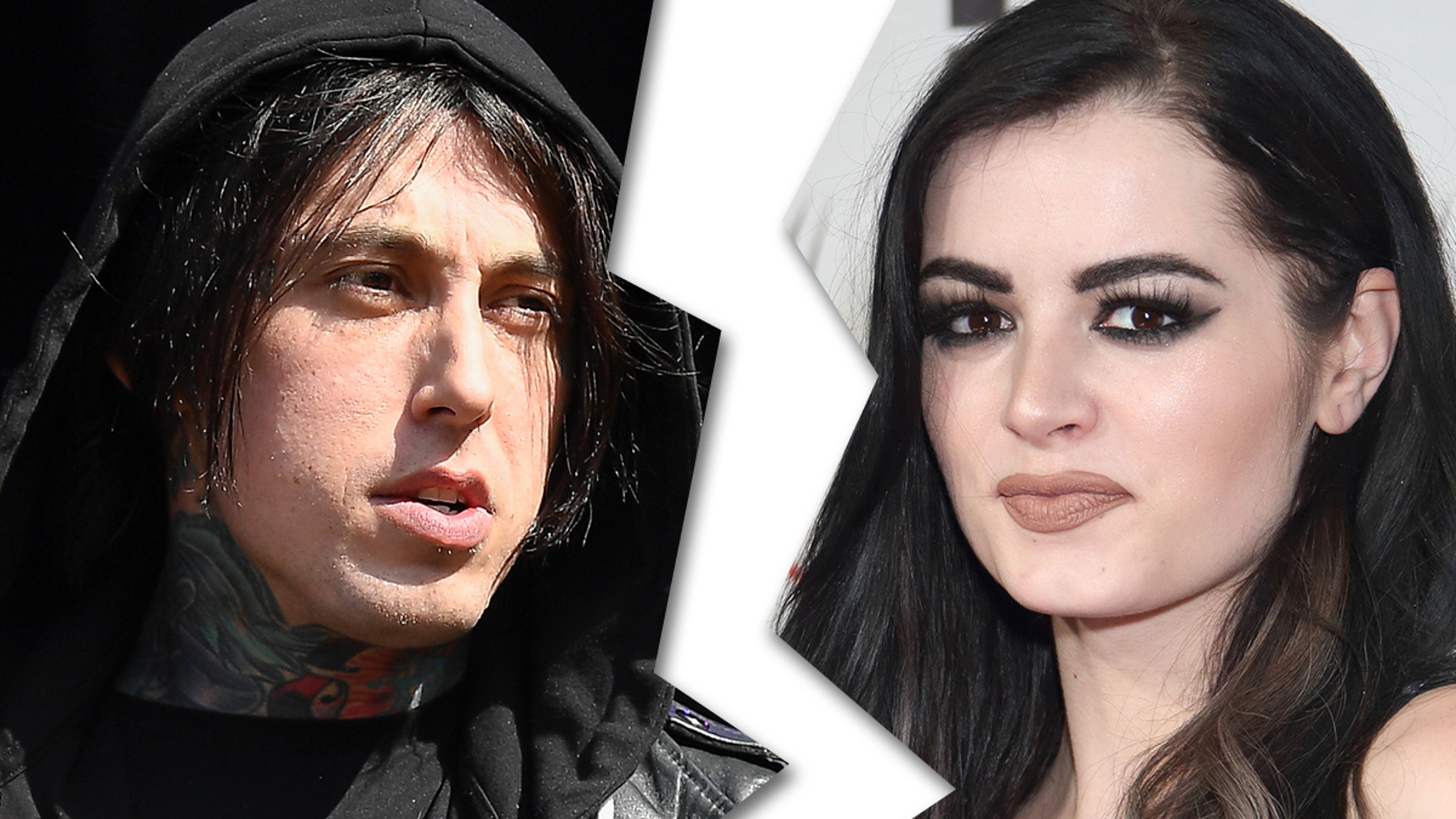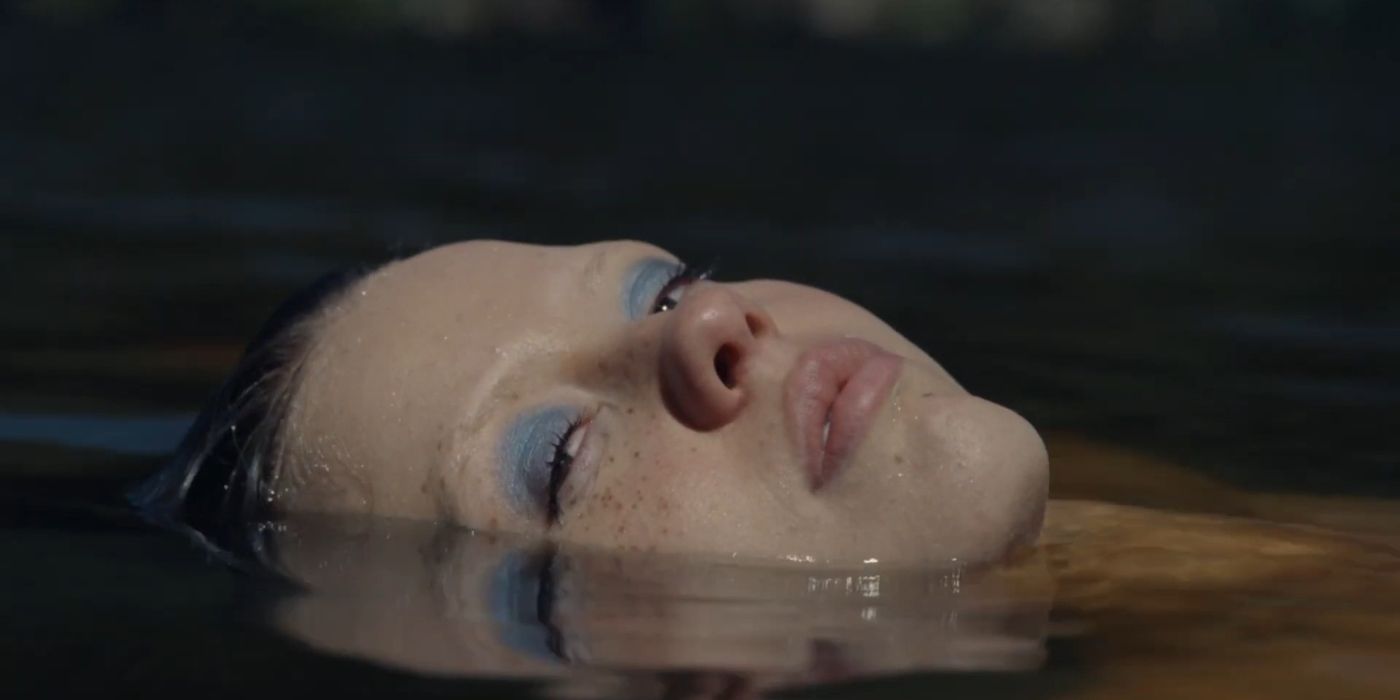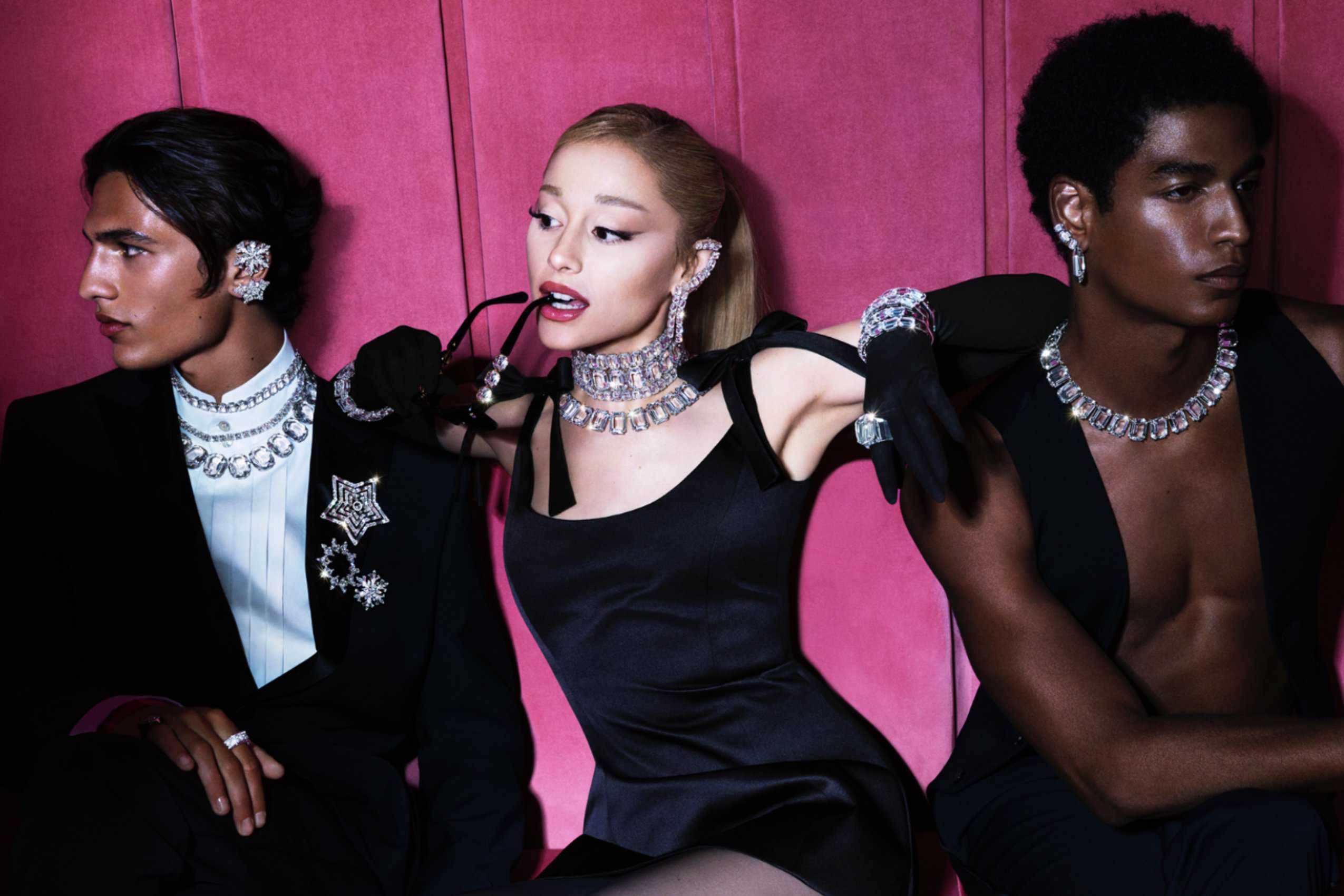All of Taylor Swift’s Eras, ExplainedGetty Images/Leah Romero
When did Taylor Swift become Taylor Swift? It’s not an easy question to answer. Swift is the consummate skin-shedder, forever toeing the line between self-expression and self-creation. In this sense, she’s also the consummate millennial: taught from youth to craft a persona, only for human emotion to blow it up. The difference is Swift, unlike so many her age, seems to thrive on this cycle. As much brand as flesh and blood, as much an inventor as historian (and, lately, re-inventor), Swift typically understands how she’ll be perceived better than those tasked with perception. These traits make her a fascinating, complex celebrity, but an undoubtedly masterful storyteller.
The “Anti-Hero” singer wants to be a great artist. In fact, she’s happy to proclaim she is one, which her loudest critics interpret as incendiary, if not outright blasphemous. Swift is not inauthentic, but neither is it difficult to notice her calculations behind the scenes. Even her frequent use of “Easter eggs” in lyrics, music videos, album artwork and her own wardrobe invite fans to pay witness not just to her genius, but to the lengths she’s gone to prove it. The trick is she wants us all to feel in on the not-so-secret secret. As she sings in a track off her newest album, Midnights, “No one wanted to play with me as a little kid / So I’ve been scheming like a criminal ever since / To make them love me and make it seem effortless / This is the first time I’ve felt the need to confess.”
So it’s worth exploring, then, how the course Swift has charted both shaped and stifled this love. Each of the singer’s 10 main studio albums have arrived packaged with their own “aesthetic,” as many of her fans are eager to dissect, and many refer to the periods surrounding her albums as their own “eras.” With each release, Swift morphed and evolved, retooling herself (and her wardrobe) while at the same time wrestling to reveal more truth.
So when did Swift the human become Swift the icon? Or, perhaps, when did Swift realize she could be both? Different critics and fans will tell you different stories: that she found herself during the launch of her first solo tour; that she peaked years ago; that she’s at her most comfortable today; that she didn’t have true control until she’d rescued her songs from the clutches of Scooter Braun. None or all of these theories could be true. Below, we’ll examine each of the artist’s so-called album “eras,” keeping in mind the only obvious truth: Swift is just happy we’re paying attention.
Story continues
Getty Images/Leah Romero
Taylor Swift (2006)
In the beginning, the teenage Wyomissing, Pennsylvania native known as Taylor Swift was a country darling through and through. Her self-titled debut album, featuring soon-to-be hits including the wistful “Teardrops On My Guitar” and “Tim McGraw,” was buoyed by the Nashville twang she worshipped growing up—and adopted to fit in. Appropriately, she donned the cowboy boots to match.
Those early years saw Swift transition from patronized underdog to opening act (she performed ahead of stars including George Strait and Brad Paisley), cementing her ingenue status but coloring within the lines of country music marketing. Still, she was smart enough to lean into branding that heralded her as both the Next Big Thing and the girl next door, enticing but approachable. Swift opted for prom-like gowns on the red carpet and boho-lite sundresses for photo shoots and concert appearances, but her unrestrained curls and winking charm spoke of a talent that would soon eclipse the constraints of her genre.
Major Songs:
Major Moments:
-
Made Nashville her home base
-
Signed with Big Machine Records
-
Became youngest person to win Nashville Songwriters’ Association Songwriter/Artist of the Year award
-
Dated Joe Jonas
Getty Images/Leah Romero
Fearless (2008)
Finally, headliner status: With the release of Swift’s sophomore album, the true craze began in earnest. Dressed in a combination of mini dresses and princess gowns, schoolgirl skirts and sparkles, Swift launched her first solo tour with Fearless, a bolder, more confident sophomore album that was no less romantic than her debut. Armed with hits including “Love Story” and “You Belong With Me,” she began to switch her cowboy boots out for heels, but her lucky number 13 remained painted on the back of her hand. Although technically a country album, Fearless marked Swift’s most notable first steps toward pop crossover as she earned fans (and play time) outside of the main country stations.
The era also marked Swift’s earliest forays into the celebrity drama that would chase—and, at times, consume—much of her career. During the singer’s acceptance speech at the 2009 MTV Video Music Awards, Kanye West stepped onto the stage to interrupt, arguing that Beyoncé was more deserving of the win. (Swift and West would go on to reconcile, only to fall out again years later.) The bonds between Swift’s lyrics and her personal relationships snapped into sharp focus as multiple former romantic partners spoke out about her—either directly or indirectly—following their breakups. Tabloids capitalized on the fascination to (mostly) disappointing results, but ultimately the media blitz worked in the star’s favor: She was no longer just an artist but a personality.
Major Songs:
-
“Love Story”
-
“You Belong With Me”
-
“Fifteen”
-
“Fearless”
-
“Forever & Always”
Major Moments:
-
Released the first country songs to top Billboard’s Pop Songs and Radio Songs charts
-
Launched the Fearless Tour
-
Won her first Grammys, including Album of the Year
-
Hosted Saturday Night Live for the first time
-
Was interrupted by Kanye West during her MTV VMAs speech, sparking years-long tension between the two
-
Starred in the film Valentine’s Day
-
Dated Taylor Lautner and John Mayer
-
First became close friends with Selena Gomez
Getty Images/Leah Romero
Speak Now (2010)
Swift learned fast that if she wanted to maintain any control over her narrative, she’d need to write it herself, in every possible sense. She’d already established herself as a talented young lyricist with an invaluable skill: She could distill hyper-specific emotions into a product, something digestible, cathartic and—most importantly—addicting. Those who loved Swift, then and now, always wanted more.
In 2010, she silenced the naysayers who argued the true credit was due to her co-writers; with Speak Now, there could be no question whose pen had conjured this much passion. The album was the first Swift wrote on her own, and the first she co-produced. The tracks maintained her affable femininity—the giggle near the end of the titular track “Speak Now” stands out—while affirming her talent as an excavator of her own heartbreak. “Back to December” and “Dear John” were clearly written about her ex-boyfriends Lautner and Mayer, and the intimacy of the details within each song brought fans closer in what was already an intense parasocial relationship. Her concert appearances took on a new performance quality, her line deliveries more dramatic, her stages exploding with fireworks. When meeting fans or holding hands on the street with new beaus Jake Gyllenhaal and Conor Kennedy, Swift dressed in a preppier mix of oxford heels, beanies, collared dresses and cable-knit sweaters, while her concert wardrobe retained its fairytale sweetness with a hint of the 1989-era edge to come. Perhaps most importantly, she slashed her bangs into their now-signature blunt style. With every move, Swift was inching closer to the pop princess she’d become.
Major Songs:
Major Moments:
-
Launched the Speak Now World Tour
-
Won multiple Grammys and was nominated for first Golden Globe
-
Dated Jake Gyllenhaal and Conor Kennedy
Getty Images/Leah Romero
Red (2012)
Widely considered one of Swift’s best records and a fan-favorite to the point of fervent debate, Red was so much more than a breakup album, and it inspired an era much bigger than Swift’s personal life. With the first drum beats of the opener “State of Grace,” the singer moved with clarity of intention: Now, more than ever, she’d carved out her brand. And it was equally clear how much fighting Swift was doing behind closed doors for the sake of that brand, taking bigger swings at the wall between country and pop with hits like “I Knew You Were Trouble,” “22,” and “We Are Never Ever Getting Back Together,” which became teenage anthems across the country (and inspired some memorable memes).
As Pitchfork wrote in its (eventual) 9.0 rating of the album, “Red is also the first record where Swift directly echoes [Joni] Mitchell’s writing, a once potential and hazy inspiration now coming into view.” Swift’s lyrics are at their sharpest, most poignant here, making the standout tracks not “I Knew You Were Trouble” or “22” but the sleeper hits “Begin Again” and “All Too Well,” the latter of which Swift re-recorded in 10-minute form nearly a decade after its initial release. And away from the studio Swift was cresting into true superstar status, selling out stadiums and dating heartthrobs.
Swift’s always been an autumn girl at heart, and the Red era was marked by her knit scarves, raincoats, and saddle-bag purses, as well as her concert attire of high-waisted shorts, striped shirts, and ever-present sparkle. A touch of scarlet accompanied her wherever she went, whether in her wardrobe or on her lips.
Major Songs:
-
“I Knew You Were Trouble.”
-
“All Too Well”
-
“22”
-
“We Are Never Ever Getting Back Together”
-
“Begin Again”
-
“Everything Has Changed”
Major Moments:
-
Launched the Red Tour
-
Earned her first Billboard Hot 100 No. 1 single in the U.S.
-
Dated Harry Styles
-
Feuded with fellow star Katy Perry, the basis of which would inspire the 1989 hit “Bad Blood.” (The two are now friends.)
Getty Images/Leah Romero
1989 (2014)
The 1989 era is perhaps one of Swift’s most memorable, and that’s no accident. The star’s face was everywhere, particularly on Instagram, where her parties and appearances with the so-called Squad became the stuff of legend. She moved to New York City; swapped her look from schoolgirl to uptown girl; replaced the oxfords with pumps and the sweaters with coordinating crop tops and skirts. A gaggle of models and celebrities became her near-constant companions, including Gomez, Camila Cabello, Karlie Kloss, Hailee Steinfeld, Kendall Jenner, Cara Delevingne and Gigi Hadid.
With the introduction of her first-ever true pop album, Swift became not just a tabloid feature but a fixation. Commentators couldn’t seem to agree if she was too skinny or not skinny enough, or if her infamous shocked face was cute or annoying. Her star-packed video for “Bad Blood” spurred rampant theorizing about its not-so-subtle jabs at Katy Perry, and her messy break-up with DJ and producer Calvin Harris was extensively covered after the two wiped any evidence of their joint dates and vacations from social media. After Swift was spotted kissing actor Tom Hiddleston only days later, the drama reached a fever pitch with one fiery tweet from Harris: “I know you’re off tour, and you need someone new to try and bury like Katy ETC, but I’m not that guy, sorry. I won’t allow it.”
Of course, then Kanye West and his then-wife Kim Kardashian got involved. After the release of West’s controversial “Famous” music video, which featured a wax figure of a naked Swift and the lyrics “I made that bitch famous”—something Swift was apparently none too pleased about—Kardashian released Snapchat videos featuring a recording of West and Swift on the phone. In the videos, the singer allegedly gave approval to the song, though Swift soon hit back, posting on social media: “Where is the video of Kanye telling me he was going to call me ‘that bitch’ in his song? It doesn’t exist because it never happened.”
The 1989 era will forever be remembered for its flying-too-close-to-the-sun sear, but it was nevertheless one of the most important turning points in Swift’s life. She won additional Grammys, proved her country-to-pop transition to be all but effortless, and learned when and how to fight for herself—perhaps best in her 2017 case against the radio host David Mueller, whom she sued for groping her during her Red tour. Swift’s reputation might’ve taken a plunge after 1989, but she was already a master at comebacks.
Major Songs:
-
“Shake It Off”
-
“Bad Blood”
-
“Blank Space”
-
“Style”
-
“Out of the Woods”
-
“Wildest Dreams”
Major Moments:
-
Released her first true pop album
-
Moved to New York City
-
Launched the 1989 World Tour
-
Assembled the so-called Squad
-
Won additional Grammys, including Album of the Year
-
Removed her music (temporarily) from Spotify and Apple Music in protest of the platforms’ royalty practices
-
Sued David Mueller for sexual assault
-
Faced controversy with the release of Kanye West’s “Famous”
-
Dated Calvin Harris, Tom Hiddleston, and Joe Alwyn
Getty Images/Leah Romero
Reputation (2017)
It was the best of times and the worst of times. A darker, moodier Swift returned from her exile with a new love and a new sound, one that was sexier, angrier, and more self-protective. Long gone was the wide-eyed girl on Fearless. “She’s largely abandoned effervescence, wonderment, and narrative,” wrote Pitchfork. “Say goodbye to maple lattes and hello to whiskey on ice, to wine spilling in the bathtub, to Old Fashioneds mixed with a heavy hand.” Not everyone appreciated this sharp, reclusive chapter in the Swift story at the time, but in hindsight it’s difficult to imagine her career without it.
While often lambasted as a cringey argument against her 1989-era “cancellation,” Reputation in fact revealed the most about this new version of Swift in its softer moments. “Delicate,” “Dress,” and “New Year’s Day” spoke to a fluttery, fragile peace Swift had discovered within herself after falling from grace. Unlike the wild candor of her earlier albums, Reputation spoke to the sacred intimacy of a new relationship, one she’d go on to maintain to this day with the low-key actor Joe Alwyn. This Swift was battle-scarred, sure, but she was also stronger, more mature. Echoing the tongue-in-cheek ferocity of 1989’s “Blank Space,” Swift swatted at the tropes so often hurled against her: that of the spoiled child, the promiscuous pop star, the drama queen, the hopeless romantic. And she cleverly snatched a motif thrust at her as an insult—the treacherous snake—by making it the symbol of her new era. Snake statues lined the stage on her Reputation tour, her skin dotted with serpentine jewelry as her wardrobe grew heavier, darker, but no less glittering. It was a form of armor, and it suited her well.
Major Songs:
Major Moments:
-
Wiped her social media accounts
-
Became the most awarded female musician in American Music Awards history
-
Launched Reputation Stadium Tour
-
Released the Reputation concert film on Netflix
Getty Images/Leah Romero
Lover (2019)
Just as quickly as she’d embraced the shrouded cape of Reputation, Swift shed the maroon lipstick for the bright, effervescent pink of the Lover era. This, perhaps, was Swift at her campiest—and, depending on whom you ask, her most delightful. In the titular track of the star’s seventh album, she swore to be “overdramatic and true” to her partner, a delicious promise both self-deprecating and self-indulgent, a line Swift can straddle like no other. The album did away with Reputation’s edgy theatrics for bouncy synth-pop, full of upbeat riffs and swooning trills. (It was also the first album to feature anything resembling a political statement from Swift in her pro-LGBTQ rights anthem “You Need To Calm Down.”) She filled her closet with Stella McCartney, with pastel denim jackets and bubble-gum pink Gucci loafers, dip-dying the ends of her hair blue. What on the surface seemed superficial—the rainbow explosions of the “ME!” music video, for instance—solidified into something real with the spare, exacting rhythms of “False God” and “Cornelia Street.”
Swift was happy and in love, enjoying the longest and most private relationship of her life, one both she and Alwyn have continued to protect with religious attention to detail. She dropped an intimate documentary, revealing her struggles with disordered eating and her stance on politics, and appeared in the gleefully disastrous musical adaptation Cats. But behind the scenes, she was strategizing for what The New York Times proclaimed “The Pop Music Civil War of 2019.” After her record label Big Machine was purchased by Ithaca Holdings and the music manager Scooter Braun, giving them the rights to her old masters, Swift called the business deal her “worst-case scenario” and announced she would re-record her old albums. The move marked a departure in the long-accepted problematic practices of music ownership and distribution, and further solidified Swift’s status as a formidable self-advocate.
Major Songs:
Major Moments:
-
Went to bat with Ithaca Holdings and Scooter Braun
-
Released first album from her new deal with Universal Music Group and Republic Records
-
Appeared in the film Cats
-
Released the Netflix documentary Miss Americana
Getty Images/Leah Romero
folklore (2020)
After the COVID-19 pandemic shut down Swift’s plans for a Lover tour, she retreated into isolation, from which she conjured the atmospheric, indie-adjacent folklore. Working with The National’s Aaron Dessner, she dropped the album as a surprise during the lonely, agonized summer of 2020, delighting fans in such desperate need of the cathartic escapism the album offered. With the mood and intention of a grand reset, folklore is by far the most fictional of Swift’s albums. But it is no less introspective than Swift’s prior works—a storybook portrait of Americana, nostalgia, and wanderlust, knitted together with Swift’s breathy alto and melancholy chords. In “the last great american dynasty,” “madwoman” and “mirrorball,” her capacity for allegory and metaphor crystallized into something prismatic and powerful, proving once and for all that Swift could deliver a magnum opus from more than just her autobiography. This was also, notably, her first time collaborating with Alwyn, who penned a few lines under the pseudonym William Bowery.
While largely unable to perform live due to pandemic restrictions, Swift worked her performance-art magic from afar, donning a summery cottagecore aesthetic of gingham and polos and lace, her bangs mussed and braid untidy. In black and white photos, she romped through forest glades and fields in chunky boots and spaghetti-strap dresses, forever self-mythologizing. When she announced on Instagram one November night that she had “not a lot going on at the moment,” fans were smart enough not to believe a word.
Major Songs:
Major Moments:
Getty Images/Leah Romero
evermore (2020)
Sure enough, Swift followed up folklore only a few months later with its wintery twin sister, evermore. Although the folklore and evermore “eras” are often treated as one, it’s worth examining them as the separate experiences they presented in the drawn-out weeks of the pandemic’s peak. After surprise-dropping evermore, Swift wrote on Instagram, “In the past I’ve always treated albums as one-off eras and moved onto planning the next one after an album was released. There was something different with folklore. In making it, I felt less like I was departing and more like I was returning.” evermore presented an opportunity for a longer stay inside her own mind, where her narratives could break free from the demands of the big-stage, big-money playbook. The result was another slow, soft, ethereal album, stuffed with hidden gems and made for chilly nights by the fireplace light.
The record also marked another of Swift’s turning points. If Reputation was penned in the grey area between self-defense and self-acceptance, and Lover in the rainbow haze of being adored, evermore evokes the fluid nature of selfhood itself. This Swift is more translucent, less at arms, comfortable moving within the contours of her now-adult life. She is also more at peace with her history, and the country-inspired tracks on evermore reflect that maturity.
Draped in long-sleeved floral maxi gowns, plaid wool coats and turtlenecks, her hair a muted dirty blonde, Swift won her third Album of the Year Grammy after announcing her first re-recorded albums were already on the way. Within months, both Fearless (Taylor’s Version) and Red (Taylor’s Version) hit shelves, revisiting the superstar’s old sound with the wisdom and care learned from her folklore and evermore days.
Major Songs:
-
“willow”
-
“no body, no crime (feat. HAIM)”
-
“coney island (feat. The National)”
-
“champagne problems”
Major Moments:
-
Began re-recording and re-releasing her old albums with the addendum “Taylor’s Version”
-
Won her next Grammys
-
Directed and released the music video for “All Too Well (10-Minute Version),” starring Sadie Sink and Dylan O’Brien
-
Received an honorary Doctor of Fine Arts degree from New York University, where she gave the 2022 commencement address
Getty Images/Leah Romero
Midnights (2022)
Happily back in the pop seat but with the foundation of folklore and evermore beneath her feet, Swift returned with her tenth album Midnights in the fall of 2022. Inspired by 13 such witching hours throughout her 32 years, the album is a paradoxically futuristic retrospective, pairing producer Jack Antonoff’s sonic indulgences with Swift’s own musings on the past. Such territory has always proved fertile ground for the star, but as Lindsay Zoladz wrote in The New York Times, “Here, Swift sounds more authentically like an ambassador of millennial unease than she has in some time.”
In Red, a whimsical Swift sang, “We could get married, have ten kids and teach ’em how to dream.” Midnights takes a different stance, addressing the constant questions she and Alwyn receive about their engagement status: “Only kind of girl they see is a one night or a wife.” With age and the time that comes with it, Swift views her position atop pop music’s pinnacle with a new pragmatism, precious if not essential. Still, to call Swift a cynic might as well be sacrilege. She is just as calculating and as lovestruck as ever, toasting Alwyn with the nuanced bop “Lavender Haze” and the comforting ballad “Sweet Nothing.” While done up in the aesthetics of the 1970s—old Polaroids and disco glamour—Midnights actually takes cues from every one of Swift’s past albums, melting them into a heady brew potent enough to stand on its own.
On the red carpet, Swift’s outfitted herself in diamonds and stardust, smart suits and eye-catching textures; at home, in cashmere and stripes. Much of the Midnights era still awaits us: A tour is certain, as are announcements of Swift’s next re-recordings. All but assured is that the best is yet to come.
Major Songs:
-
“Anti-Hero”
-
“Midnight Rain”
-
“Bejeweled”
-
“Lavender Haze”
-
“Karma”
-
“You’re On Your Own, Kid”
-
“Would’ve Could’ve Should’ve”
Major Moments:
You Might Also Like
You can view the original article HERE.















:quality(85):upscale()/2023/09/27/901/n/1922283/d377438f651492be9b4cb9.24381734_.jpg)


:quality(85):upscale()/2024/02/12/677/n/1922398/e6e8b6f665ca3640e02e25.22771798_.jpg)











